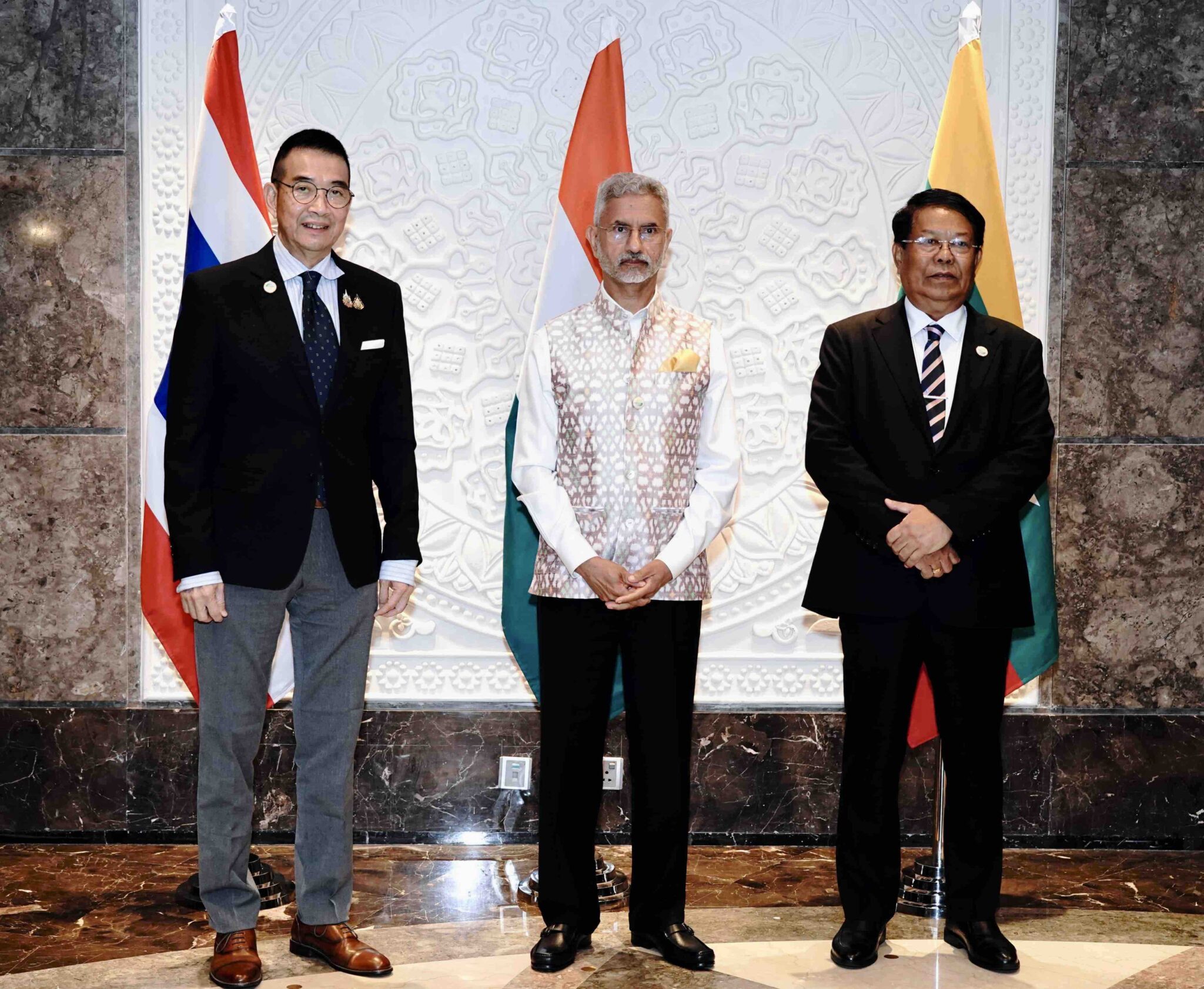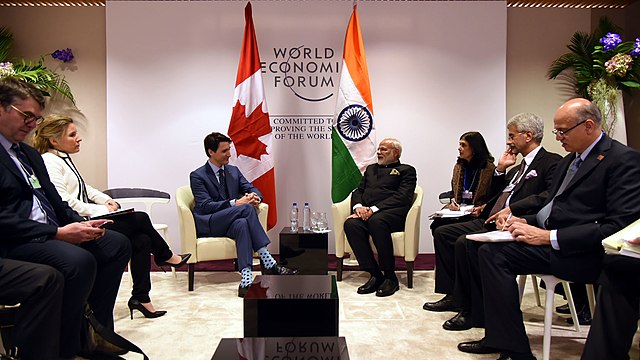By Dr. Irfan ul Haq from University of Kashmir & Joshua Bowes from SAFN
The analysis explores Nepal’s dual challenge: mitigating the impact of natural calamities while adeptly navigating the geopolitical currents shaped by its powerful neighbours.

Introduction
Nestled amidst the towering peaks of the Himalayas, Nepal presents a unique case study in the realm of international relations, illustrating the intricate interplay between environmental vulnerability and geopolitical strategy. The devastating earthquake of 2015 underscored not only the country’s susceptibility to natural disasters but also highlighted its strategic significance in the tenuous balance of power between two regional giants: China and India. This analysis explores Nepal’s dual challenge: mitigating the impact of natural calamities while adeptly navigating the geopolitical currents shaped by its powerful neighbours. By examining Nepal’s diplomatic engagements and its efforts to uphold sovereignty against the backdrop of environmental and political pressures, we delve into the broader implications of its position for regional stability and international diplomacy. Through this analysis, Nepal emerges as a poignant example of a small state leveraging its strategic location and diplomatic acumen to navigate the complexities of international relations in a rapidly changing global landscape.
“Nepal emerges as a poignant example of a small state leveraging its strategic location and diplomatic acumen to navigate the complexities of international relations in a rapidly changing global landscape.”
Seismic Shifts: Nepal’s Policy Evolution and Geopolitical Balancing Act Post-2015 Earthquake
Nearly a decade after the 2015 earthquake’s devastation, Nepal has embarked on a transformative journey, reshaping its policies and international stance amidst the challenges of reconstruction and regional diplomacy. The earthquake catalysed a re-evaluation of disaster management and infrastructure resilience, leading to the enactment of stringent building codes and the establishment of the National Reconstruction Authority. These measures signify Nepal’s commitment to fortifying its societal and economic foundations against future calamities.
Simultaneously, Nepal’s diplomatic endeavours have evolved, reflecting a nuanced strategy to balance its relations with China and India. In the wake of the disaster, Nepal has sought to diversify its international partnerships, leveraging its strategic position to attract investments in infrastructure and development projects from both neighbouring giants. This period has witnessed a significant shift in Nepal’s foreign policy, aimed at maximising autonomy and economic recovery by engaging with China’s Belt and Road Initiative while maintaining strong ties with India through bilateral agreements and trade partnerships. This recalibration of policies and international relations illustrates Nepal’s adaptive strategies in the face of adversity, positioning itself as a resilient and astute player in the complex geopolitical landscape of South Asia.
Geopolitical Quakes: Navigating the Sino-Indian Rift
Straddling between the rising global behemoths of China and India, Nepal occupies a uniquely strategic nexus in South Asia. Kathmandu’s positioning subjects it to the fluctuating dynamics of Sino-Indian relations, compelling Nepal to skilfully balance its diplomacy to uphold sovereignty and protect its national interests. The intricacies of this balance are magnified during crises, such as the 2015 earthquake, which exposed Nepal to the geopolitics of international aid—a realm where humanitarian efforts intertwine with strategic interests. The earthquake’s aftermath illuminated the dual-edged nature of foreign assistance, revealing how aid can serve as a soft power mechanism for China and India to wield influence in Nepal. Both nations swiftly extended support, embedding their geopolitical ambitions within the guise of humanitarian aid. This scenario placed Nepal at the heart of a soft power tug-of-war, necessitating a diplomatic tightrope walk to equitably manage its relations with both benefactors without compromising its autonomy. Furthermore, the seismic event underscored the strategic significance of Nepal’s infrastructure and trade routes, especially those entwined with India. The disruption of these lifelines not only hindered disaster recovery but also accentuated Nepal’s economic vulnerabilities and the complexities of its border negotiations with India. This disruption had far-reaching impacts, affecting the flow of essential goods and amplifying the challenges in Nepal’s diplomatic and economic spheres.
“Nepal seeks to foster a balanced engagement with China and India, aiming for a harmonious coexistence that safeguards its interests in the tumultuous South Asian geopolitical landscape.”
As Nepal continues to navigate this geopolitical rift, its strategies reflect a deeper understanding of the regional power play, adapting its policies to ensure resilience against both natural and political quakes. By leveraging its strategic position, Nepal seeks to foster a balanced engagement with China and India, aiming for a harmonious coexistence that safeguards its interests in the tumultuous South Asian geopolitical landscape.
China’s Economic Footprint in Nepal: Strategic Investments or a Path to Indebtedness?
China’s expanding influence in Nepal, marked by substantial infrastructure investments under the Belt and Road Initiative (BRI), embodies a strategy aimed at enhancing regional connectivity and fostering economic growth. In Nepal, China’s BRI footprint includes critical projects such as roads, airports, and hydropower plants, signifying a move towards modernising Nepal’s infrastructure and stimulating economic development. However, these investments bring to light concerns over the sustainability of debt and the risk of ‘debt-trap diplomacy,’ a term used to describe the predicament where a country becomes overly indebted to China, potentially leading to a compromise in its financial independence and sovereignty. Critics of the BRI argue that such investments, while beneficial, often entail loans with higher interest rates and shorter repayment terms compared to those offered by multilateral lenders like the World Bank or the Asian Development Bank, citing the example of the Pokhara International Airport project financed by China with a notably higher interest rate. This financial dynamic raises apprehensions about Nepal’s future financial autonomy, especially in light of its ongoing recovery from natural disasters like the 2015 earthquake. The discourse around China’s Investments in Nepal reflects a critical examination of whether these infrastructural advancements pave the way for economic prosperity or ensnare the nation in a cycle of indebtedness that could impinge on its sovereignty and developmental priorities. Nepal’s engagement with China’s BRI and its financial policies could have profound effects on its relationships with both China and India. By increasing economic ties with China, Nepal might gain infrastructure development and economic growth opportunities but also faces the risk of falling into a debt trap, potentially increasing China’s influence over Nepal’s domestic and foreign policies.
“The discourse around China’s Investments in Nepal reflects a critical examination of whether these infrastructural advancements pave the way for economic prosperity or ensnare the nation in a cycle of indebtedness”
A rising trend of Hindu nationalism in Nepal, largely facilitated by New Delhi, pits Kathmandu between a rock and hard place. It’s clear many Nepalis desire Hindu statehood, but a close relationship with India is likely to raise eyebrows in China, particularly with the history of deep-rooted Nepal-China relations. At the same time, the influence of communismon Nepal’s political realm remains formidable. Subsequently, Kathmandu must walk the geopolitical tightrope carefully. This dynamic necessitates a delicate diplomatic balance for Nepal to manage its traditional ties with India, which may view Nepal’s closeness with China as a strategic concern. Consequently, Nepal must carefully navigate these relationships to maintain its sovereignty and leverage benefits from both neighbours without alienating either, ensuring a balanced approach that respects the historical ties with India while engaging with China’s economic opportunities.
The Balancing Act: Crafting a Sovereign Future
“..diversification can mitigate the risks of heavy indebtedness and ensure that investments are aligned with Nepal’s sustainable development goals.”
In crafting its sovereign future, Nepal’s strategic navigation between China and India is pivotal. Diversifying its international relations is essential for reducing dependency on any single nation, thereby enhancing Nepal’s diplomatic leverage and economic stability. Adopting a ‘multi-aligned’ diplomatic strategy, Nepal can engage both neighbours in a manner that avoids favouritism, fostering a balanced relationship that prioritises Nepal’s national interests. Economically, fostering an investment-friendly environment to attract a broad spectrum of international investors is crucial. This diversification can mitigate the risks of heavy indebtedness and ensure that investments are aligned with Nepal’s sustainable development goals. Strengthening ties with multilateral institutions and engaging in regional cooperation frameworks, like the South Asian Association for Regional Cooperation (SAARC), can further augment Nepal’s bargaining power on the international stage.
Conclusion
Nepal’s journey post-2015 earthquake exemplifies strategic resilience and diplomatic agility. In responding to natural and geopolitical challenges, Nepal has taken significant steps to balance its ties with China and India, leveraging investments to bolster its economy while carefully navigating the complexities of ‘debt-trap diplomacy.’ This delicate balancing act has involved enhancing disaster preparedness, diversifying economic partnerships beyond its immediate neighbours, and engaging in multi-aligned diplomacy. These efforts reflect Nepal’s commitment to maintaining sovereignty and fiscal autonomy, showcasing its success in fostering a stable, prosperous future amidst the dynamics of regional power play.
Dr. Irfan ul Haq is a Senior Research Fellow, Dept.Political Science, University of Kashmir in Srinagar, India.Joshua Bowes is a Research Associate with The Millennium Project’s South Asia Foresight Network (SAFN) in Washington, D.C.


